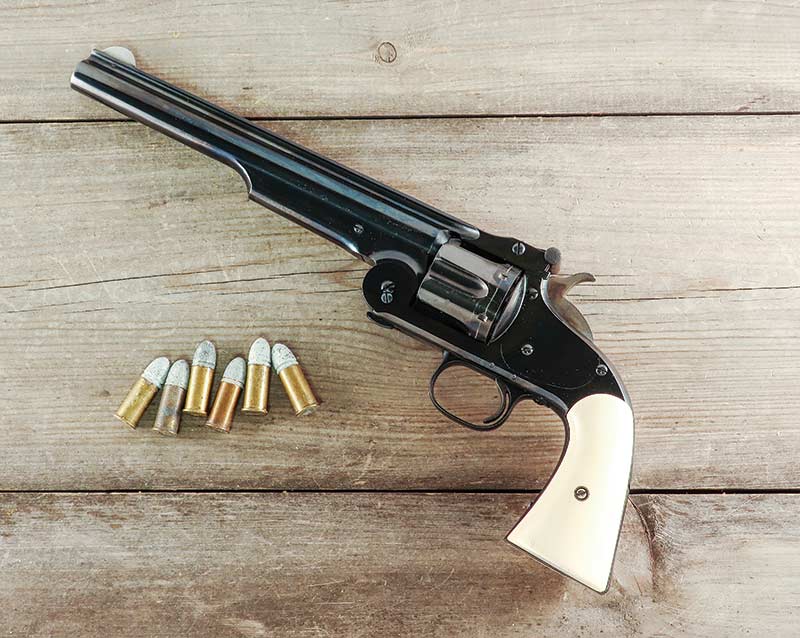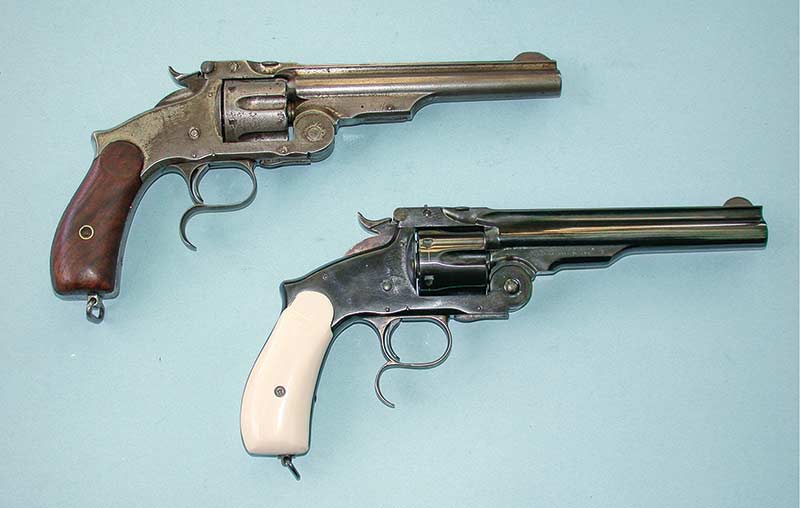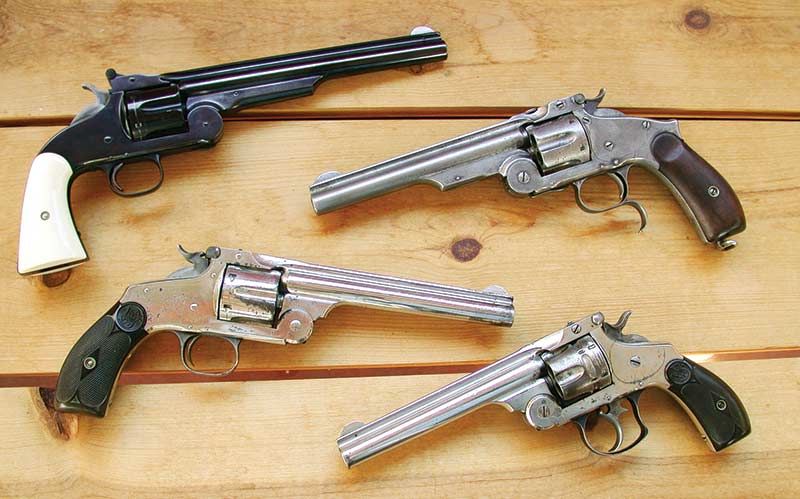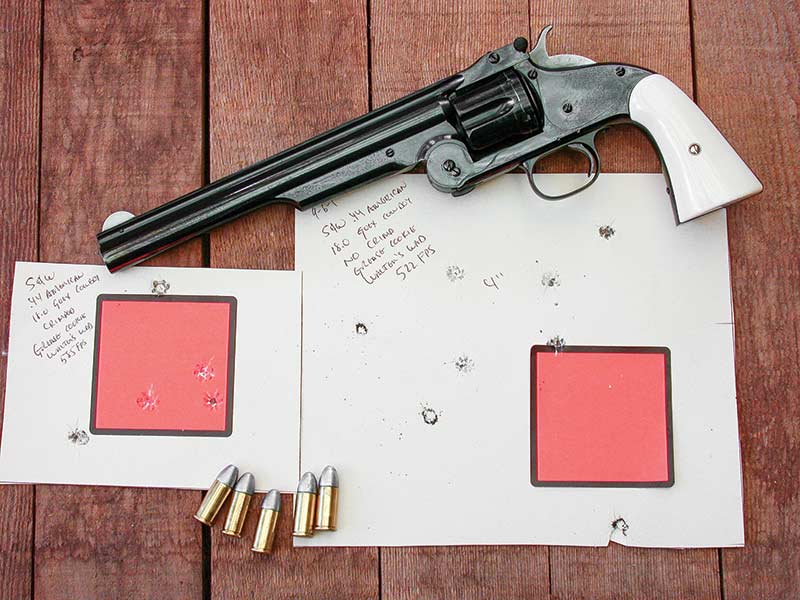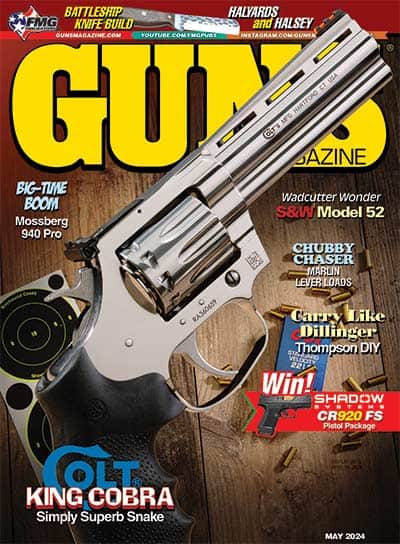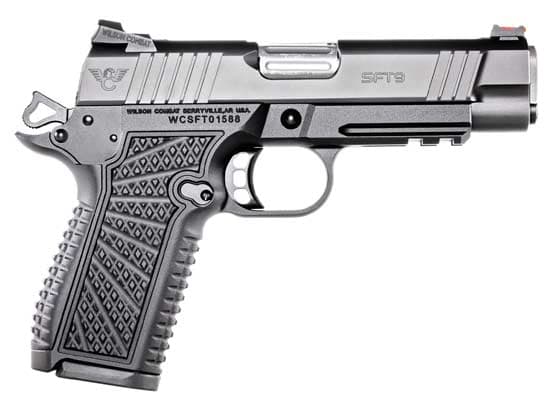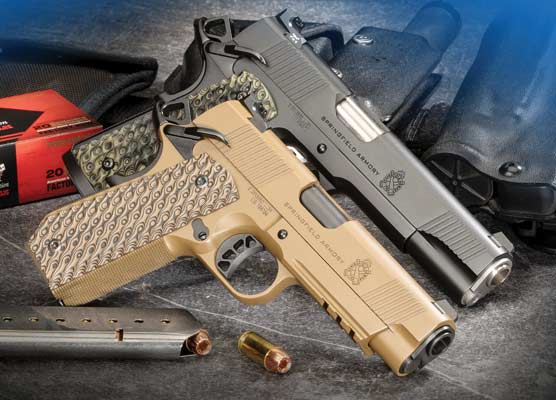First Big Bore Sixguns – Part I
S&W Sets The Tone
S&W MODEL #3 AMERICAN — Beginning in 1857, Smith & Wesson produced .22 and .32 Rimfire pocket pistols. In order to offer a larger caliber in a more convenient form, Smith & Wesson needed both the W.C. Dodge and C.A. King patents. The former provided for a design that locked at the top of the back portion of the frame and pivoted on the barrel portion at the lower part of the front portion of the frame. This was to be combined with King’s invention of simultaneous ejection of spent cartridges. Smith & Wesson was able to purchase both of these patents and in late 1869 produced the Smith & Wesson Model #3 American .44 caliber six-shot revolver, the first true big bore cartridge-firing six-shooter.
For the first time cartridge cases were made of brass instead of copper and the cases were centerfire instead of rimfire. The .44 Smith & Wesson American cartridge was loaded with 25 grains of black powder under a 218-grain bullet with a muzzle velocity of 650 fps. It very early gained the reputation for accuracy to 50 yards. In addition to the centerfire cartridge, Smith & Wesson also chambered for the .44 Rimfire, the .44 Henry, which was found in the 1860 Henry and 1866 Winchester. Now shooters had the opportunity to have this first sixgun/levergun combination, that is, a revolver and rifle both chambered for the same cartridge.
Suddenly all percussion pistols were obsolete and this new weapon was such a major improvement over both the cap-and-ball revolvers and single shot pistols of the time. Sam Colt introduced the first practical single-action sixgun in 1836 but it would be Smith & Wesson taking the lead in manufacturing the first cartridge firing big bore single-action sixgun. In December of 1870, the U.S. Government ordered 1,000 S&W Americans for military use. Once the Cavalry managed to acquire .44 Americans, Smith & Wesson soon began to receive orders from around the country.
Smith & Wesson had wisely placed sample revolvers in the right hands. General Gorloff, the Russian military attaché, was in the United States to order rifles from Colt and received an S&W American from Smith & Wesson. This resulted in an order for 20,000 S&W Americans by the Russian government in 1871. Six months later the Russian Grand Duke Alexis would visit Smith & Wesson and be presented with a fully engraved, pearl-stocked American before going west to hunt buffalo with two notable western figures, Buffalo Bill and George Armstrong Custer.
The Cimarron Model #3 American is built on the action of the Model #3 Schofield; however, the exterior is a faithful copy of the original American. In fact, placing it beside my original 150-year-old American shows them looking like the proverbial two peas in a pod. This may be a 150-year-old design; however, it shoots as well as, or better than many modern target pistols. Using both factory loads and reloads, as well as .45 Colt and .45 Schofield rounds, saw most of my shots resulting in groups right at 1″ or slightly above for five shots at 20 yards. The Uberti/Cimarron is now also available in .44-40 and a version with .44 Specials, .44 Russians and .44 Colt followed by the Schofield. A few years back, the New Model #3 arrived, but it looked like we would never see a rebirth of the American. Now it has happened. Mike Harvey of Cimarron Firearms has worked for several years to see this project come to pass. After firing one of the first to arrive in this country, I can say it has been well worth the effort and certainly the wait.
MODEL #3 RUSSIAN — The Russians asked for changes to the American including its ammunition. In fact, the Russians made several improvements to the S&W Model #3 American revolver as well as to its ammunition. For greater shooting comfort the square stock and grip frame of the American was rounded and diminished in diameter, a lanyard ring was added to the butt for security, a “knuckle” was added to the back strap to keep the grip from shifting in the hand when fired, and a spur added to the bottom of the trigger guard. The 8″ barrel was cut to a more convenient 6 ½”. It was definitely a different revolver by the time the Russians got through with it.
However, it is with the ammunition that the Russians contributed the most. The S&W Model #3, as mentioned, was available chambered in either .44 Henry Rimfire or .44 Smith & Wesson American. The .44 S&W American cartridge, while of centerfire design, was very similar to the .22 Rimfire ammunition still being used today. That is, the bullet was of the heel-type with the base of the bullet smaller than the diameter of the rest of the bullet and this smaller part was inside the cartridge case. This resulted in both the bullet and the cartridge case having the same outside diameter.
The .44 American also known as the .44-100 used a cartridge case 0.90″ in length with a bullet diameter of 0.434″ and a black powder charge of anywhere from 23 to 25 grains with the muzzle velocity of 650 fps. The improved .44 Russian cartridge used a case slightly longer at 0.97″, a powder charge of 23 grains of black powder, and a round-nosed bullet weighing approximately 245 grains. A strange thing happened with the increased bullet weight, longer case, and decreased powder charge. Muzzle velocity actually went up 100 fps to 750 fps and muzzle energy was increased from 200 to 316 ft. lbs. Apparently the heel-type bullet allowed for excessive blow by and resulting loss of velocity.
The first 20,000 Model #3s supplied to the Russians were basically identical to the original Smith & Wesson American except for being chambered in .44 Russian and they are known as the First Model Russians. A change was made in the grip shape. The Second Model Russian introduced the changes made above. Pictures exist of Russian soldiers carrying their .44 revolvers in a sash with the spur hooked over the top of the sash thus preventing the sixgun from sliding down. The spur also is a great asset for deliberate shooting and by placing the middle finger on the spur, a very secure and steady grip is achieved; however, at least in my hands it is impossible for me to reach the hammer with the thumb of my shooting hand when using the spur. Perhaps the Russian soldiers were marksmen, not gunfighters.
The Third Model Russian, also known as the New Model Russian or Model #3 Russian Third Model and better known today as simply the Model #3 Russian, was a somewhat streamlined version of the First and Second Models. The former had a standard barrel length of 8″, the latter was 7″, and the Third Model was shortened to 6 ½” with an accompanying shorter extractor housing. Nearly 61,000 Third Models were produced with 13,500 going to the commercial market.
